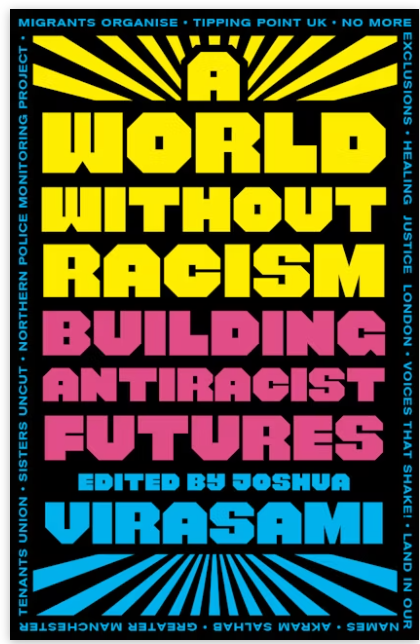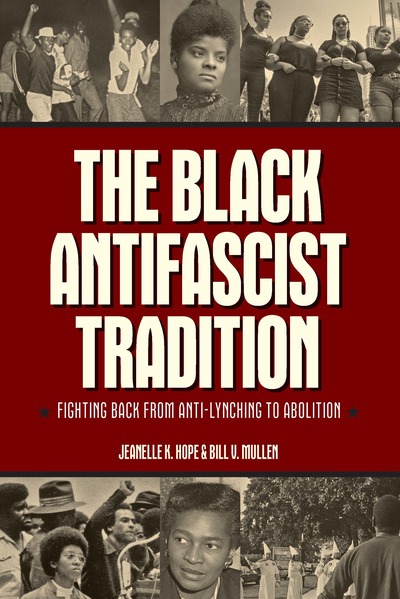Physical Resistance by Dave Hann
£14.25
A Hundred Years of Anti-Fascism, An activists’ history of the collective anti-fascist struggle in Britain
Description
Large-scale confrontations, disruption of meetings, sabotage and street fighting have been part of the practice of anti-fascism from the early twentieth century until the twenty-first. Rarely endorsed by any political party, the use of collective bodily strength remains a strategy of activists working in alliances and coalitions against fascism.
In Physical Resistance famous battles against fascists, from the Olympia arena, Earls Court in 1934 and Cable Street in 1936 to Southall in 1978 and Bradford 2010, are told through the voices of participants. Anarchists, communists and socialists who belonged to a shifting series of anti-fascist organizations relate well-known events alongside many forgotten but significant episodes.
REVIEWS & ENDORSEMENTS
With much of the book based on interviews with some of the best anti-fascists and chroniclers you will find, as well as powerful first hand accounts, Hann is to be commended in airing the differing approaches to anti-fascism. Adopting the oral “history from below” approach to discuss the Spanish Civil War, the early days of anti-fascism in Britain, as well as the united front approach to beating fascists, offers great insight. However, it also carries a certain analytical weakness. Leon Trotsky’s arguments on the necessity of the united front would have been extremely pertinent here and is a shame in a book which is fair in many respects to what underlies the method of the united front that continues to inform anti-Nazi thinking and practice. Similarly, when speaking of the 1936 Battle of Cable Street, where the centrality of mass working class resistance is explored, a contradiction to his own uncritical accounts of “organising separately from the office mobilisation” (p278) can be argued. This opens up the dangers of elitism and squaddism. One possible answer is to exercise strong, “tactical flexibility” on anti-fascist mobilisation. United Against Fascism (UAF) have taken this approach on notable victories such as that in Walthamstow in 2012, where the EDL never really recovered from the mass direct action that day. Hann and participants skilfully portray the “highlights” and “lowlights” of various mobilisations. But all such should be seen in their specific context. “Physical resistance” is dependant on many variables and can’t always be elevated into a principle. However, Hann rightly argues that the stewarding of meetings and demos relies on some being willing to do battle physically, when required. But surely a key point is that physical resistance in reality is quite a rare occurrence. Anti Nazi League (ANL) organisers from the late 1970s recall that moments such as the famous routing of the National Front (NF) at Lewisham, though crucial, were not the crux of far-left activities. Indeed, a whole number of small acts, which involved many, were important for ensuring the people were confident about confronting the Nazis on a mass basis. Similarly, it was here where long term efforts secured the backing of the best sections of the organised working class. From shop stewards’ organisations to national unions in some cases, they ensured that when it mattered, fascists were confronted. Support from trade unionists and some sections of the Labour Party have been invaluable to anti-fascist activists. But many will argue with Hann’ contention that an “unhappy marriage of convenience” existed between the Tories and ANL supporters, when the Front collapsed and many of its soft-core supporters turned to Margaret Thatcher in the 1979 election. Suzy Harding puts the case against this well: “I don’t think Thatcher had a lot to do with the NF going down the pan…it was a lot more to do with the ANL opposing them on the streets” (p300). Hann concludes with more honest accounting of this fight. Others posit that in 2010 “UAF were almost entirely the opposition to…EDL”. This is only partially correct. UAF’s approach meant there were others who flew the flag with us, including some notable Labour MPs, trade unionists and religious organisations; this follows in the ANL’s tradition. And, as Hann observes of the 1930s, “many people put aside ideological differences to fight the fascists and many have done since” (p27). I’d argue that adherence to “ideological standpoints” doesn’t preclude engaging in wider movements; indeed, the former, if properly judged, can only aid the latter. Thus the method and spirit of the united front, emanating from Trotsky, are essential in assessing every anti-fascist mobilisation. But criticism aside, Hann has done anti-fascists a real service with this book. Physical Resistance carries weight and, at moments, great humour. There is much to evaluate and debate, but also a need to stand together when it matters as the book’s final chapter right says. ~ International Socialism, 143
Physical Resistance provides a compelling account of the heroism that anti-fascism will often demand. Also included in http://thesubstantive.com/2013/01/weapons-of-choice/ http://www.huffingtonpost.co.uk/../../mark-perryman/books-for-new-year-revolutions_b_2508854.html http://www.leftfutures.org/2013/01/books-for-new-years-revolutions/ http://www.socialistunity.com/books-for-new-year-revolutions/#.UPl8r80fgy4 ~ Mark Perryman, http://www.philosophyfootball.com/news_main.html
I interviewed Dave Hann several years ago after he had co-authored another book, a more personal memoir of his own experiences squaring up to the thugs of Combat 18 and the BNP in the north west of the 90s. Thoughtful and quietly spoken with his west country accent, he seemed came over as a decent and determined character. This determination clearly made it through to this book. Physical Resistance is a posthumously released work – Dave was suffering from the late stages of cancer as he was finishing the work before his tragic early death at the age of 48 in 2009 (a foreword to the book by his partner Louise recounts this in touching detail.) It should be noted that the last chapter on more recent mobilisations against the English Defence League is easily the weakest, a patchier portrait of a more strange and complex enemy – which proclaims non-racism while practicing its opposite. This is a reflection perhaps of Hann’s fading powers and his detachment from the anti-fascist movement in his final years. Taken as a whole however the book is a fine read, and a magnificent achievement. Any Cop?: Even for those who would denounce the tactics and antics of Hann’s forbears and descendants, this is a fascinating insight into an untold side of British political and social history. ~ Ben Granger, BookMunch: http://bookmunch.wordpress.com/2013/05/14/evocative-social-history-physical-resistance-by-dave-hann/
Combining scholarship with the knowledge that can only come from political experience this is a moving memorial to the late author and those who have fought fascism in Britain for almost a hundred years. Detailed accounts, eye witness testimony and a non-sectarian approach make this an engaging and fascinating account that should be read by activists and historians of all kinds. ~ Dr Hilda Kean, Author of London Stories, 2004 and editor of People and their Pasts, 2009. Former Dean, Ruskin College, Oxford
This is real history from below. Dave Hann was an activist, and his own experience shone through as he talked to, and wrote about, the men and women who were at the sharp end of the struggle against fascism in Britain. A vital book. ~ Dr Brian Hanley, Co-author, The Lost Revolution, Penguin, 2009
Physical Resistance moves across and between the usual organisational and Party lines to provide a comprehensive account of anti-Fascism that is given life through a wealth of activists’ own words. This gives Physical Resistance a real importance. It cuts through the usual divisive fragmented histories from within the movement.It brings together the literature from within specific elements of the struggle into a less partisan over-arching story through the strength of human experiences. What I particularly appreciated about Physical Resistance was the way in which Hann has used the personal accounts and activist memories. Rather than just providing their experience as evidence, Hann’s interviewees are allowed to demonstrate their own analysis of the relationship between ideas and context. ~ Dr Lucy Robinson, University of Sussex
Additional information
| Weight | 0.420000 kg |
|---|





